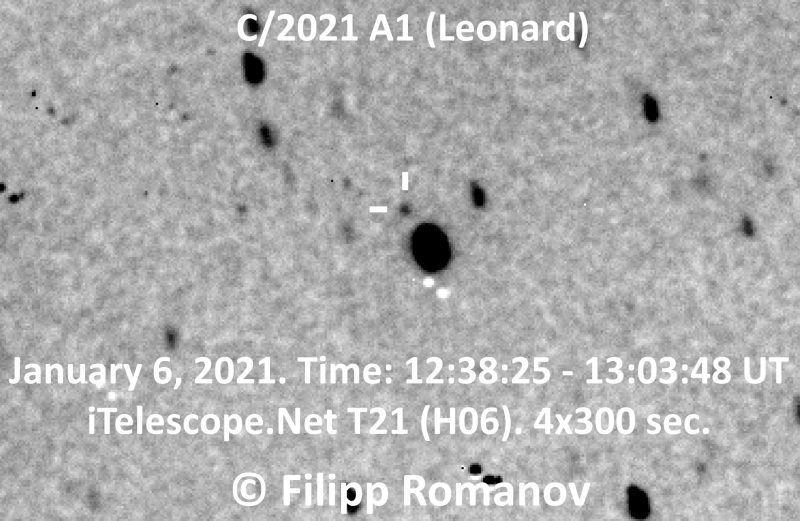
Discovered last week, new images of Comet Leonard appear to show the dusty visitor to the Solar System already has a bright nucleus and a tail.
Although it's now being photographed by astronomers across the world, EarthSky reports that the comet — officially called C/2021 A1 (Leonard) — was discovered at Arizona's Mount Lemmon Observatory on January 3, 2021 by Greg Leonard, a senior research specialist, hence the name "Comet Leonard."
Not surprisingly, it's already got its own Twitter feed.
Comet Leonard is still 6 au from the Sun. An au — short for astronomical unit — is the distance from the Earth to the Sun. Jupiter is about 5 au from the Sun while the next planet out, Saturn, is around 9 au from the Sun.
Since it's so far away, C/2021 A1 won't make its perihelion — its closest approach to the Sun — until January 3, 2022, though it is projected to get just 0.233 au from Earth on December 12, 2021.
That's a very safe distance!
Mid-to-late December 2021 is when it could look its best — likely best seen just before sunrise and just after sunset — if it survives that long.
However, do not get too excited just yet because the behaviour of comets is notoriously hard to predict.
Being positive, there's some evidence that it could peak at around magnitude 4, which means it would be visible to the naked eye. It's currently magnitude 19.
Currently visible in large telescopes only, Comet Leonard is roughly near the lower star in the "handle" of the Big Dipper — the star Alkaid — if you look north after dark. It will move towards upwards toward Alkaid for the rest of January, then loop through the Big Dipper and appear to move roughly back in the direction it came .
By the time it becomes visible to the naked eye in December 2021 — if that's what happens — Comet Leonard will be seen close to bright star Arcturus in the constellation of Boötes.




[Link]